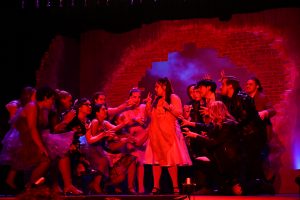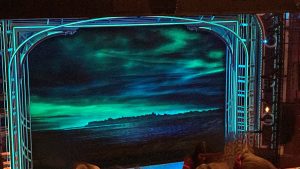The term “Renaissance Man” has never suited anyone more than it has Jaron Lanier. Best known as the man who coined the term “virtual reality,” Lanier’s latest endeavor has been composing an orchestral piece entitled Symphony for Amelia. Amelia Lanier was said to be the first female poet of the English language and was also known for her strong feminist beliefs. However, not much else is certain about the mysterious woman; some believe she was Shakespeare’s Dark Lady and others believe that she actually wrote Shakespeare’s plays for him. Regardless, it should be noted that Lanier is not certain about his relation to the late Amelia for though they share the same last name, Lanier’s father adopted the name later in life meaning he is not a Lanier by blood. Still, Amelia clearly served as a major source of inspiration for the composer, hence the title. “I was thinking of the mercurial trajectory linking Amelia to me, with its ambiguities of descent, unpredictable musical diversions, great migrations, and unwitting reunions across centuries—and this is the music that came out,” explained Lanier.
So where does Rollins come into this equation? Lanier said that he chose the Bach Festival Society for its skill and professionalism. “Often you’re writing like you’re writing for a student orchestra when you’re really writing for a professional orchestra,” he told his audience during the talk following the dress rehearsal for the Bach Festival Oct. 22. Lanier was impressed by how quickly the musicians learned the piece and found himself constantly resisting the urge to increase the difficulty of the music. Lanier admitted, “Sometimes when I write hard music and listen to the rehearsal, I feel some guilt [for the complex level of his music].”
Up until now, Lanier had been on a short break from music due to his hectic schedule, but last year he made the decision to create a new orchestral piece to be performed as soon as possible. This time around, Lanier was too busy splitting his time between his work as a scholar and his role as a dad, so he hired copyist Ted Henderson. While working with Henderson was easy, trying to maneuver the new music-writing software proved to be difficult. Henderson and Lanier devoted an ample amount of time to adjusting the supposed corrections the computer had tried to provide and occasionally were forced to give into the software’s wishes and keep things the way it wanted. “At a certain point, you just have to say ‘well, I guess that’s just how the software wants it,’” laughed Lanier.
When asked about his creative process, Lanier was quick to explain that he does not require any sort of dramatic epiphany. “For me, the core of music always has to start with something simple.” He described his style and this piece in particular as a mixture of various cultures combined with the American minimalist traditions and a “great many other things.” Lanier seemed genuinely excited about his composition being performed by the Bach Festival Society; during the dress rehearsal, he stood off to the side and watched with a smile on his face as the musicians played through his creation. As for future compositions and work with Rollins and Winter Park, Lanier said he was increasingly open to the idea, concluding his talk with some simple, yet fruitful advice to other future composers: “you do what you’ve got to do to get your music out there.”












Be First to Comment